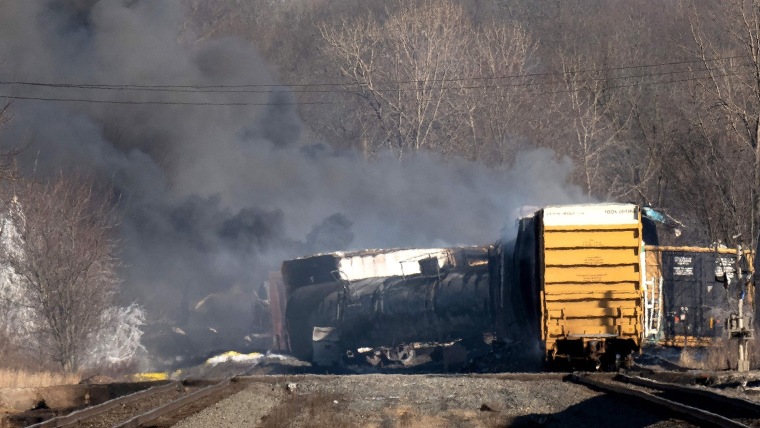
Whelton said he’s especially concerned about harmful pollutants that the derailment and fire may have created. These include compounds known as dioxins that are separate from the toxic substances initially spilled but produced when chemicals such as vinyl chloride are burned.
While the Environmental Protection Agency has said it would continue testing and monitoring air, water, and soil in East Palestine, officials did not specify if sampling would include byproducts such as dioxins.
“Dioxins are heavy compounds that like to stick to stuff,” Whelton said. “Dioxins typically stick to the particulate matter created during the burn and then can settle onto people’s properties or be brought into their homes. And they can be quite toxic if ingested and inhaled.”
Dioxins are also long-lived compounds because they do not break down easily. In some cases, Whelton said, they can be present in homes or other environments for decades.
Vinyl chloride has been the main focus of the chemicals identified at the derailment site.
Exposure at high doses can increase a person’s risk of liver damage or liver cancer, according to the CDC, but long-term exposure at low levels is also thought to have damaging health consequences.
Vinyl chloride is a volatile organic compound that can exist in liquid and gas forms. This means it can seep into the soil and pollute groundwater, but, especially at high temperatures, it can also contaminate the air, said Juliane Beier, a hepatologist at the University of Pittsburgh who has studied the effects of vinyl chloride on animals.
“Vinyl chloride is so volatile, so within homes or other enclosed spaces, it will come out of the water due to the room temperature, or especially when the water is heated — taking showers, cooking, and so on,” Beier said.
The EPA said it began testing air quality in the East Palestine area within 24 hours of the derailment. It also assists with indoor air quality monitoring as part of a voluntary program that includes more than 550 homes. So far, the agency reported that vinyl chloride and hydrogen chloride were not detected above levels of concern.
But Mo Osman, who runs Summit Environmental Technologies, a lab that Ohio’s Columbiana County hired to analyze its water samples, said it could take time for pollutants to seep into groundwater stores.
“If a well is safe right now, we don’t know what the quality of that water will be in a week, a month or two months,” Osman said. “It takes time for pollution to potentially travel from the source of contamination to the individual well, so it is very important to continue sampling at a certain frequency.”




